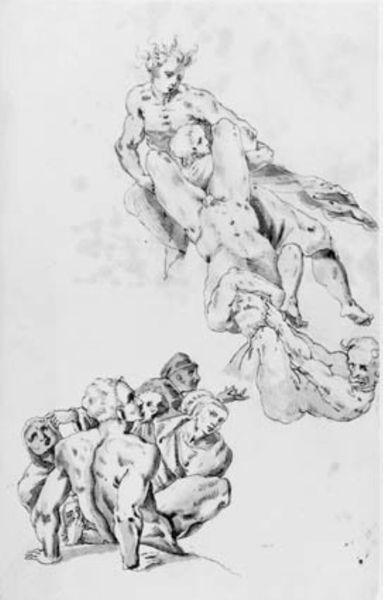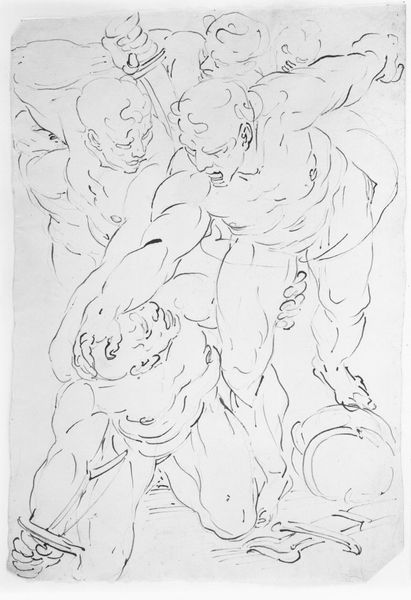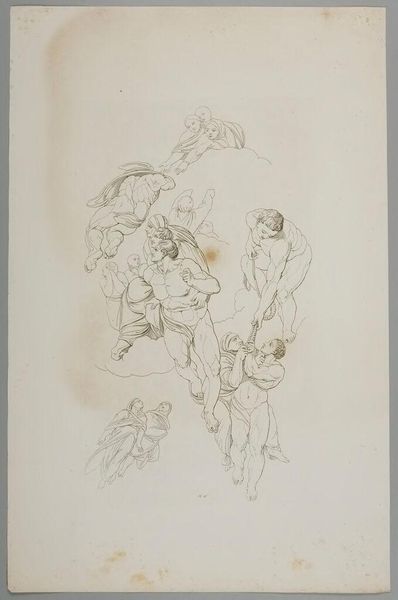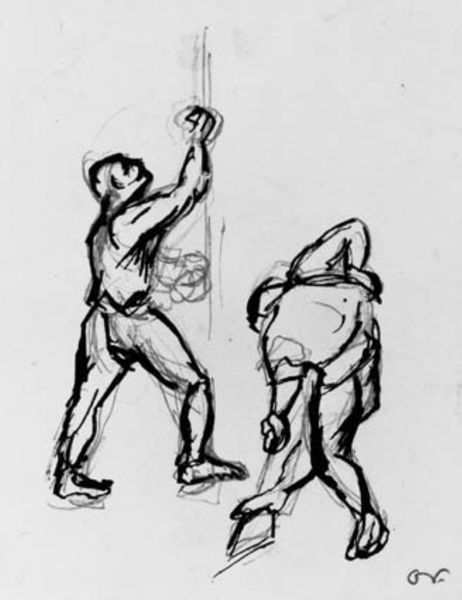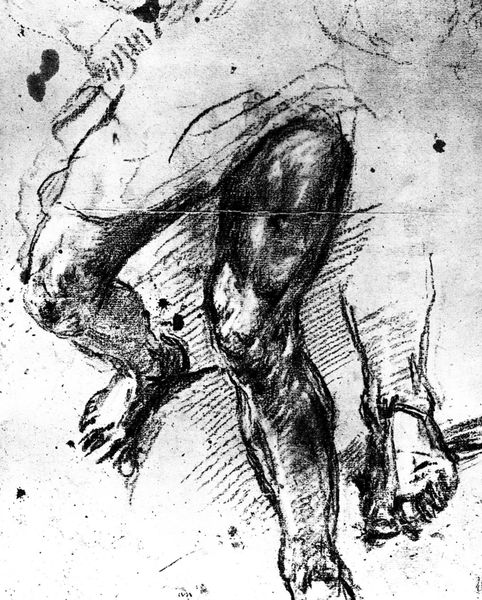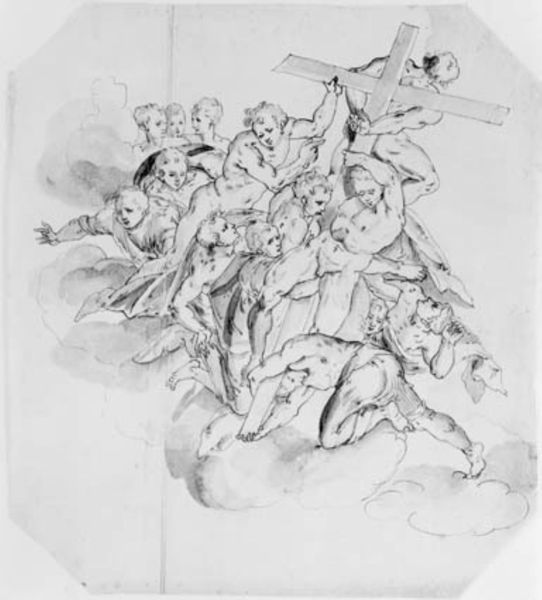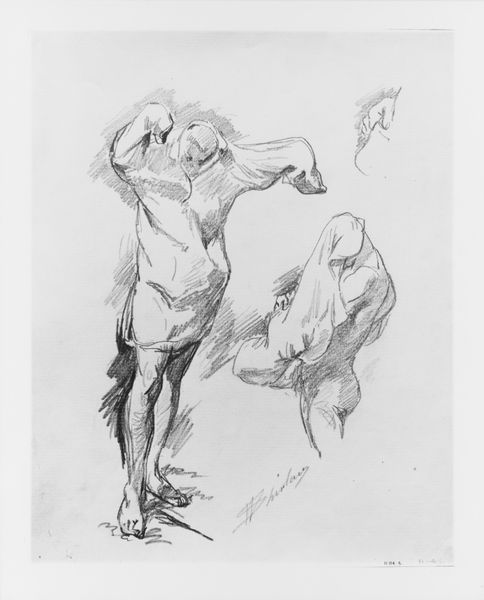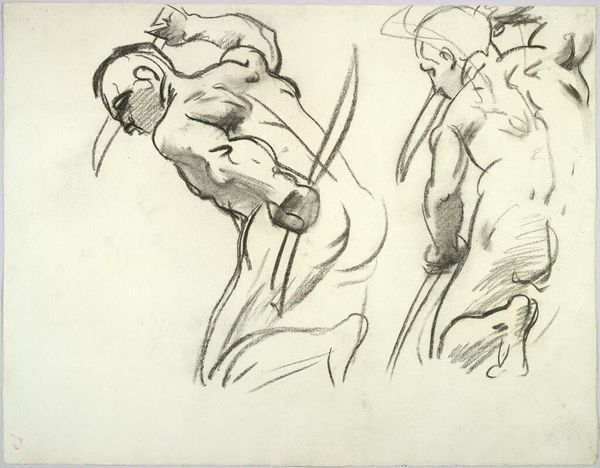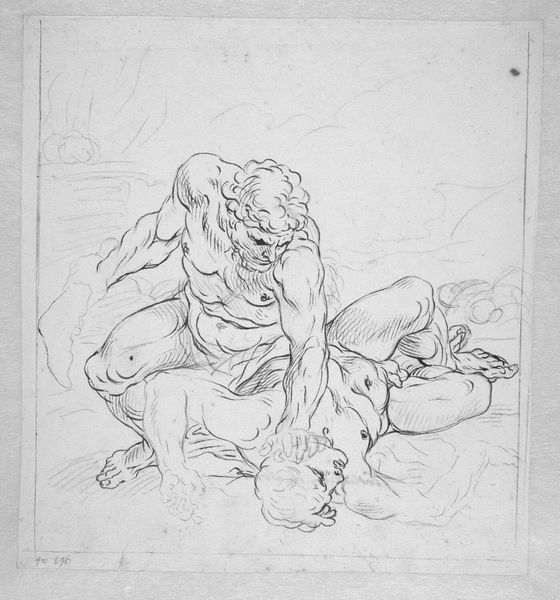
A group of figures from the lower left of the Last Judgement, Sistine Chapel 18th century
0:00
0:00
drawing, pencil
#
drawing
#
pencil sketch
#
figuration
#
pencil
#
pencil work
#
history-painting
#
italian-renaissance
Dimensions: 323 mm (height) x 204 mm (width) (bladmaal)
Editor: This 18th-century pencil drawing, found at the SMK, is titled "A group of figures from the lower left of the Last Judgement, Sistine Chapel" and is attributed to an anonymous artist. The figures look… intense, almost struggling. What do you see in this piece? Curator: I see a direct link to the modes of production in 18th-century workshops. Anonymous? Probably a student copying Michelangelo, learning the craft through imitation. The pencil—its cost, its availability—dictates the kind of study made. Was this a preparatory sketch meant to assist in the creation of a larger work? The lines themselves, so stark and economical, betray a sense of labor. Editor: That's interesting – labor. I was focused on the dynamism of the figures themselves, but I see what you mean. So, the drawing’s value comes from the access it gives to a production process? Curator: Precisely! Think about the social context. Who had access to these materials? Who was being trained? This isn't just about aesthetics; it’s about power, knowledge, and the careful, often hidden work that underpinned artistic production. Consider the act of copying, which was essential for learning the language of art. How does that devalue or add value to art and artistry? Editor: So, by understanding the material conditions and labor involved, we can move beyond simply admiring the drawing and begin to understand the broader historical context of artistic creation and power structures in art? Curator: Exactly. It moves the conversation beyond genius and into the realm of practice, access, and, frankly, class. Editor: I hadn’t considered the drawing that way before! Seeing art as the end product of material constraints really expands my thinking. Curator: It helps to see it for what it is: The manifestation of artistic processes driven by economics and modes of making.
Comments
No comments
Be the first to comment and join the conversation on the ultimate creative platform.
